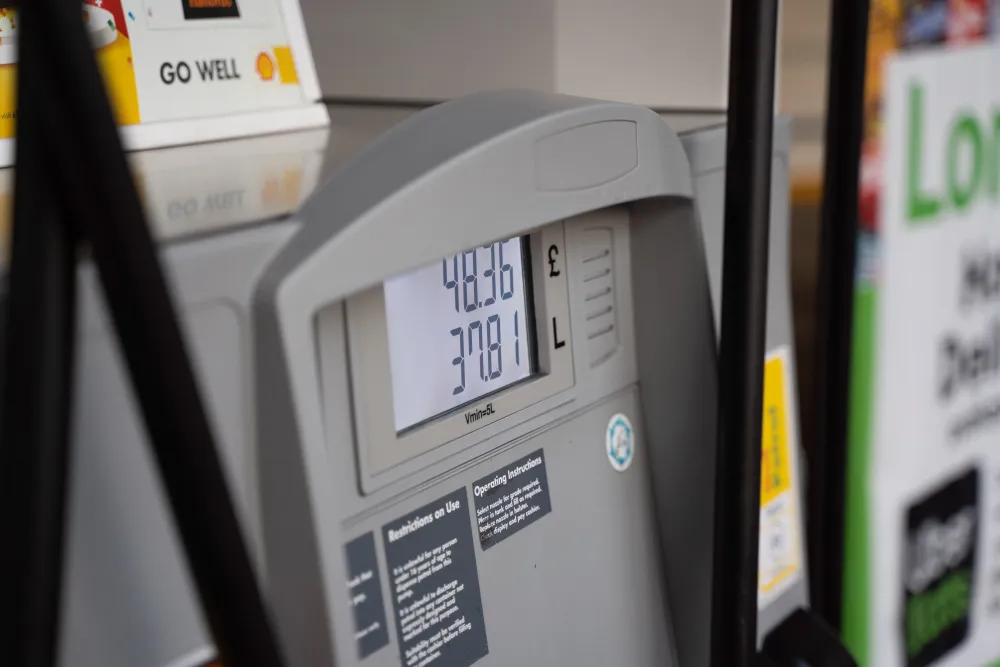
A close up of a gas pump of a gas station.
Profit Growth: One of the Biggest Inflation Drivers
It is evident that the world is yet to recover from the economic issues brought about by the COVID-19 pandemic.
In March 2020, several businesses and institutions had to shut down or cut back on their operations to comply with government regulations on physical distancing. For this reason, the beginning of the pandemic saw massive layoffs and high unemployment rates.
The past few years have seen high inflation rates amidst record corporate profits, affecting everyday consumers and limiting access to necessities. While experts believe inflation rates may fall in the next few years, prices remain high due to slow economic growth.
This article will explore the causes of inflation and its potential links with revenue growth and price gouging, as some economists have posited.
What is inflation?
Inflation is an economic phenomenon that quantifies the pace of increased prices for products and services. Consistently high inflation rates can have negative implications for the overall economy.
Inflation lessens or weakens consumers’ purchasing power, making money less valuable. It would therefore become more difficult for consumers to buy necessities and other products. It could affect the stock price of certain goods and impact the value of investments in the stock market.
Local and global economies are often complex, with various factors influencing their movements. In line with this, inflation usually occurs due to multiple factors. Let’s discuss the main drivers of inflation below.
Cost-push inflation
Cost-push inflation occurs when prices increase due to a rise in production costs. For example, a company could increase its product prices due to rising wages and the price of raw materials.
In cost-push inflation, the demand for a particular product or service doesn’t change, but its supply or inventories decline due to rising costs. Companies will then pass on the added production costs to consumers through higher prices.
A common and major sign of upcoming cost-push inflation is rising gas and metal prices. These materials play significant roles in most, if not all, production processes. Many manufacturers use metals in their operations, and nearly all businesses use gas for transportation and other purposes.
Wages can also drive cost-push inflation. In times of low unemployment, employers can increase wages to attract new workers, which raises production costs. This strategy could also affect a business’s operating profit.
Natural disasters and similar events can also cause cost-push inflation. Let’s say an earthquake or hurricane causes significant damage to a staple crop like wheat. This event can cause price increases on various products across the board in the short term.
Demand-pull inflation
Demand-pull inflation occurs when demand strongly increases while supply decreases. If the need for a particular commodity or service suddenly spikes, its prices can also increase. If this surge in demand occurs for several goods at once and becomes sustained over a period of time, it can cause demand-pull inflation.
Rising wages and low unemployment rates can increase consumer confidence in spending, increasing the demand for certain goods and services. As demand grows, the corresponding supply will decrease, increasing prices in the process.
Companies can also drive demand-pull inflation, primarily by selling or producing high-demand products that give them a competitive advantage. Since many people want to buy their products, they can jack up their prices, especially if people are willing to pay for them.
Built-in inflation and increasing wages
With built-in inflation, people expect inflation to continue and prices to rise. For this reason, they will demand higher wages from employers, which will increase production costs.
Higher wages also increase people’s disposable income. More disposable income can increase the demand for more goods and services, affecting their supply.
Expansionary fiscal and monetary policy
Governments’ expansionary fiscal policies can increase income and growth opportunities for a small business or a large corporation, and consumers. These policies can be corporate tax cuts or increased government spending.
Corporate tax cuts allow businesses to gain more profits, which they can invest back into their companies or other ventures. Increased government spending on various sectors can also lead to increased demands.
Expansionary monetary policies can also drive inflation. These policies lower bank interest rates, allowing businesses and consumers to borrow more. This increased availability of money in the economy can spur spending and raise demand for goods and services.
Monetary devaluation
Monetary devaluation happens when an excess of money circulates in the economy. The monetary value diminishes when there are more dollars than goods and services to support their value.
Consequently, when the money supply exceeds the optimal level, its worth declines, thereby reducing the buying power of consumers. As a result, commodities and services become relatively more expensive.

How Profits and Inflation Saw Concurrent Growth
One of the most recent and concrete manifestations of the relationship between profit growth and inflation came with the COVID-19 pandemic and the following years.
During the pandemic’s early days, prices of essential commodities like gas and groceries significantly increased. This price surge also occurred for pandemic essentials such as masks, personal protective equipment, and sanitizers.
Some of these increases can be chalked up to supply chain problems, especially with the limited mobility businesses and consumers experienced during the lockdowns. However, some studies suggest intentional profiteering, especially in medical essentials. Some businesses have taken advantage of this immense need to boost their company’s profitability.
Since the pandemic, corporations have achieved unprecedented profitability, soaring to $2.08 trillion in the third quarter of 2022.
On the other hand, real wages have remained stagnant and even experienced significant declines compared to price inflation. Many consumers have been struggling to make ends meet these past few years.
Corporate Profit as an Inflation Driver
Profit markups are an essential pricing component for businesses. A reasonable profit markup percentage can aid a company’s growth strategy. However, extreme markups can also harm consumers and drive high inflation rates.
The Economic Policy Institute published a study on corporate profits and inflation. The institute found that over 50 percent of the price increases between 2020 and 2021 in the non-finance corporate sector can be attributed to corporate profits.
Pandemic inflation can stem from supply chain issues, especially considering government restrictions and logistical interruptions at the time. However, corporate greed and price-gouging are also significant factors.
Market concentration in a few dominant companies has empowered these few corporations to make higher-than-normal profit markups. Some companies may have leveraged their corporate power to increase their company’s financial power and profitability.
“[The] Fed should make clear that raising profit margins [is] spurring inflation … Companies have passed higher costs on to consumers. But they have also taken advantage of circumstances to expand profit margins. The broadening of inflation beyond commodity prices is more profit margin expansion than wage cost pressures,” wrote Paul Donovan, UBS’s Chief Economist of Global Wealth Management.
Assess Inflation Drivers for On-Ground Impact
Inflation is often a complex phenomenon, and it is not inherently harmful, especially when prices and wages are experiencing concurrent growth. However, current inflation rates have caused significant price increases amidst a decline in the value of real wages.
Multiple factors can contribute to changing inflation rates. However, excessive profiteering to benefit corporate bottom lines is one of the most significant, especially since the pandemic. Analyses and metrics are crucial to understanding inflation, but ensuring this knowledge leads to real-world solutions that benefit the public is also vital.


